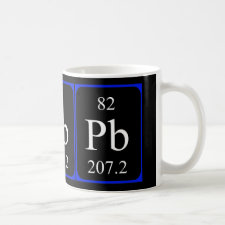
Authors: Ao XL, Guan HZ
Article Title: Preparation of Pb(II) ion-imprinted polymers and their application in selective removal from wastewater.
Publication date: 2018
Journal: Adsorption Science & Technology
Volume: 36
Issue: (1-2)
Page numbers: 774-787.
DOI: 10.1177/0263617417722262
Alternative URL: http://journals.sagepub.com/doi/10.1177/0263617417722262
Abstract: A novel hydrophilic Pb(II) ion-imprinted polymer (Pb(II)-IIP) was synthesized using lead ion as a template ion, 2-(allyl sulfur) nicotinic acid as functional monomer by precipitation polymerization method. The adsorption capacity of Pb(II)-IIP to Pb(II) was saturated at 16 min, and the adsorption process is consistent with the quasi-second-order kinetic adsorption model. The optimum adsorption capacity of Pb(II)-IIP was 29.67 mg/g, about triple than Pb(II)-NIP, and the adsorption is in accordance with the Langmuir isothermal model, which indicates that it is dominated by single layer chemical adsorption. X-ray Photoelectron Spectroscopy (XPS) and Energy Dispersive Spectrometer (EDS) data confirm that the chelate ratio of Pb(II) to 2-(allylthio) nicotinic acid is 1:2. In the presence of competing ions, the adsorption capacity of Pb(II)-IIP to Pb(II) is much larger than that of other ions, which indicates that Pb(II)-IIP is less disturbed by competitive ions. The experiment of application of practical wastewater shows that Pb(II)-IIP has a Pb(II) removal rate of 97.2% or more in practical industrial wastewater, which is in accordance with national emission standards. It is proved that Pb(II)-IIP is an effective material to remove Pb(II) in industrial wastewater
Template and target information: lead ion, Pb(II)
Author keywords: adsorption, imprinted polymer, isothermal model, Kinetic adsorption, polymerization



Join the Society for Molecular Imprinting

New items RSS feed
Sign-up for e-mail updates:
Choose between receiving an occasional newsletter or more frequent e-mail alerts.
Click here to go to the sign-up page.
Is your name elemental or peptidic? Enter your name and find out by clicking either of the buttons below!
Other products you may like:
 MIPdatabase
MIPdatabase









